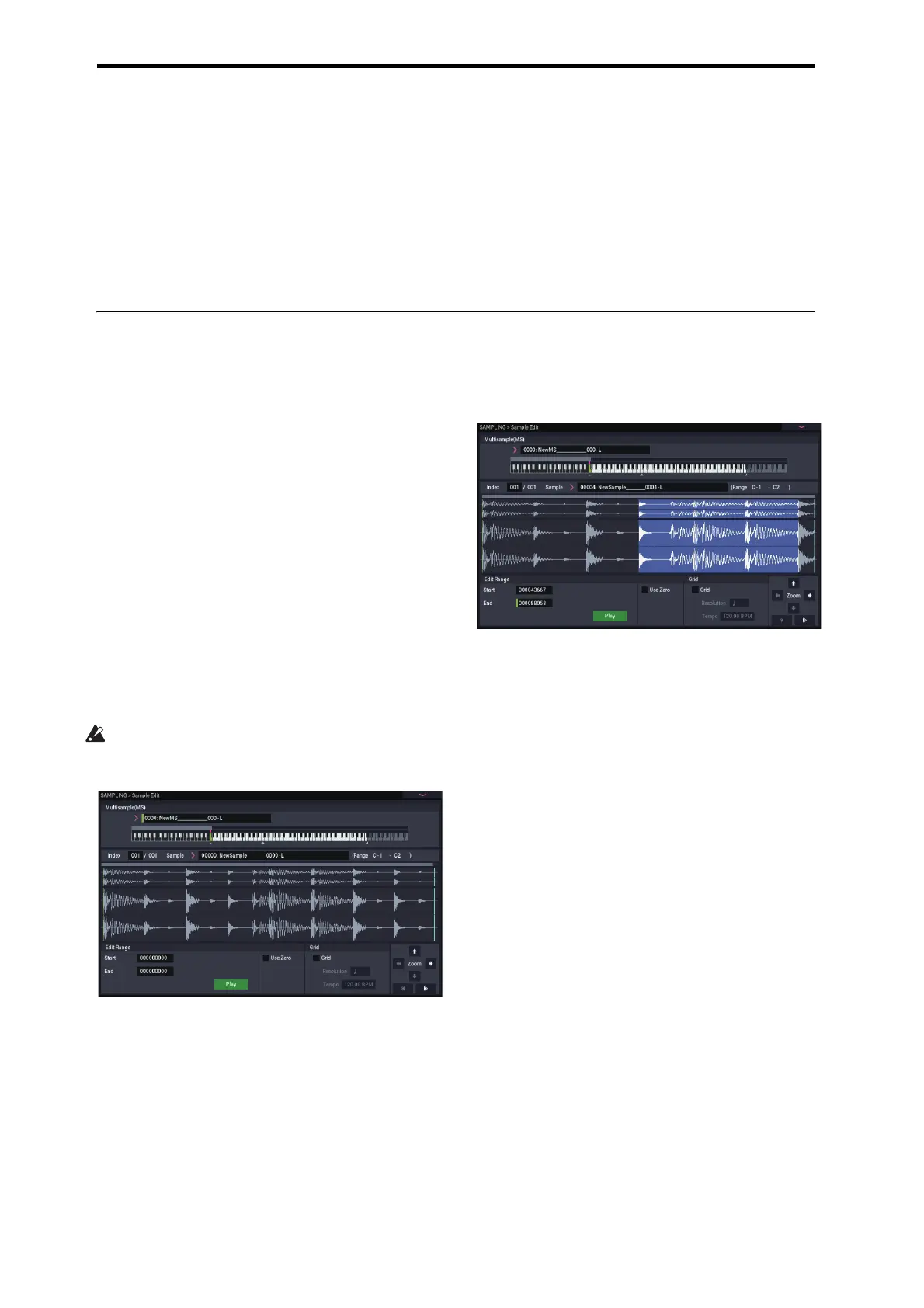Sampling (Open Sampling System)
142
In the Home– Mixer page, press the C#2 key. The RPPR
function will begin playing pattern U00.
In the Pattern/RPPR, Pattern Edit page, press the
SEQUENCER START/STOP button to start playback of
pattern U00.
When you press the C#2 key in the Pattern/RPPR, RPPR
Setup page, the RPPR function will start playing pattern
U00.
In the same way as in step 7, changing the playback
tempo will not affect the pitch.
Sample waveform editing
In the Sample Edit screen you can do the following things.
• You can set the Edit Range
Start
and
End
while
watching the waveform. You can use functions such as
Zoom In/Out, Use Zero, and Grid to edit the waveform
efficiently.
• You can edit the sample waveform using a variety of
commands such as cut, copy, mix, insert, normalize,
volume ramp, and reverse.
• A Rate Convert function lets you lower the sampling
frequency of the sample data in a range of 2/3 to 1/6,
producing “down-sampled” effects.
• The Link function (Link: with crossfade) lets you
connect two samples into one. When doing so, you can
apply a crossfade so that the sustained portion of the
samples will change gradually to create a natural
transition between the two samples.
1. Select the sample that you wish to edit.
Use
Sample Select
or
Index
in the Sample Edit page or
the Recording, Recording page to select the sample.
If you use
Sample Select
to select the sample, be aware
that the index assignment will also change.
2. Select the Sample Edit page.
The waveform data of the currently selected sample will
be displayed.
Sample waveforms recorded with
SAMPLING mode
set
to Stereo will be shown in two lines. The upper line is the
Left channel waveform, and the lower line is the Right
channel waveform.
3. Use “Edit Range Start” and “End” to specify the
range that you wish to edit.
The selected range will be highlighted.
If you want to audition the selected region, press the Play
button in the LCD. The selected region will play at the
pitch of the base key (the green key in the keyboard
display). You can specify the base key by holding down
the ENTER button and playing a note on the keyboard.
When you play a key to which the sample is assigned (the
highlighted range of the keyboard displayed in
“Keyboard & Pad”), the sample will be played back
according to its loop settings.
The procedure for using the ZOOM and “Use Zero”
check boxes is the same as for Loop Edit.
4. From the list of page menu, select the desired editing
command. Make the appropriate settings in the dialog
box, and press the OK button to execute.
For details on the many sample editing features, see
“SAMPLING: Page Menu Commands” on page 605 of
the PG.

